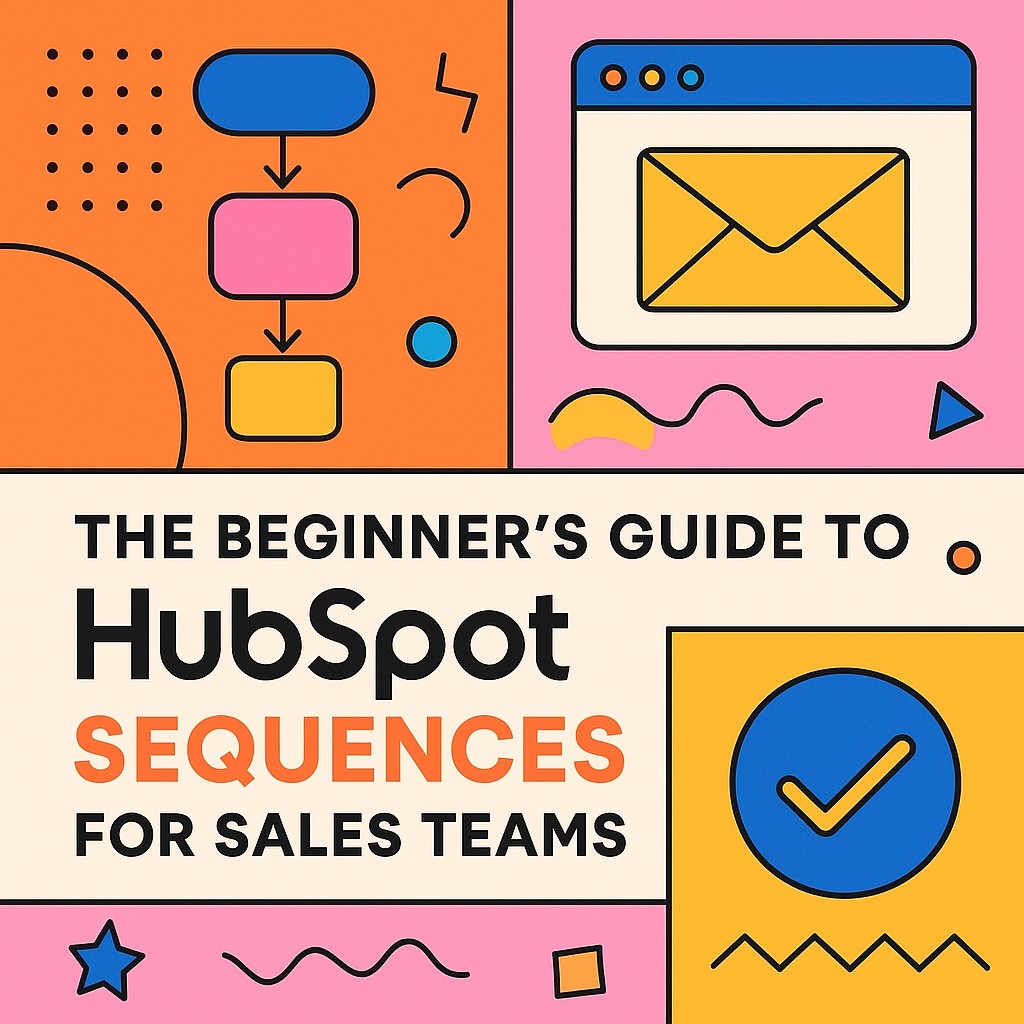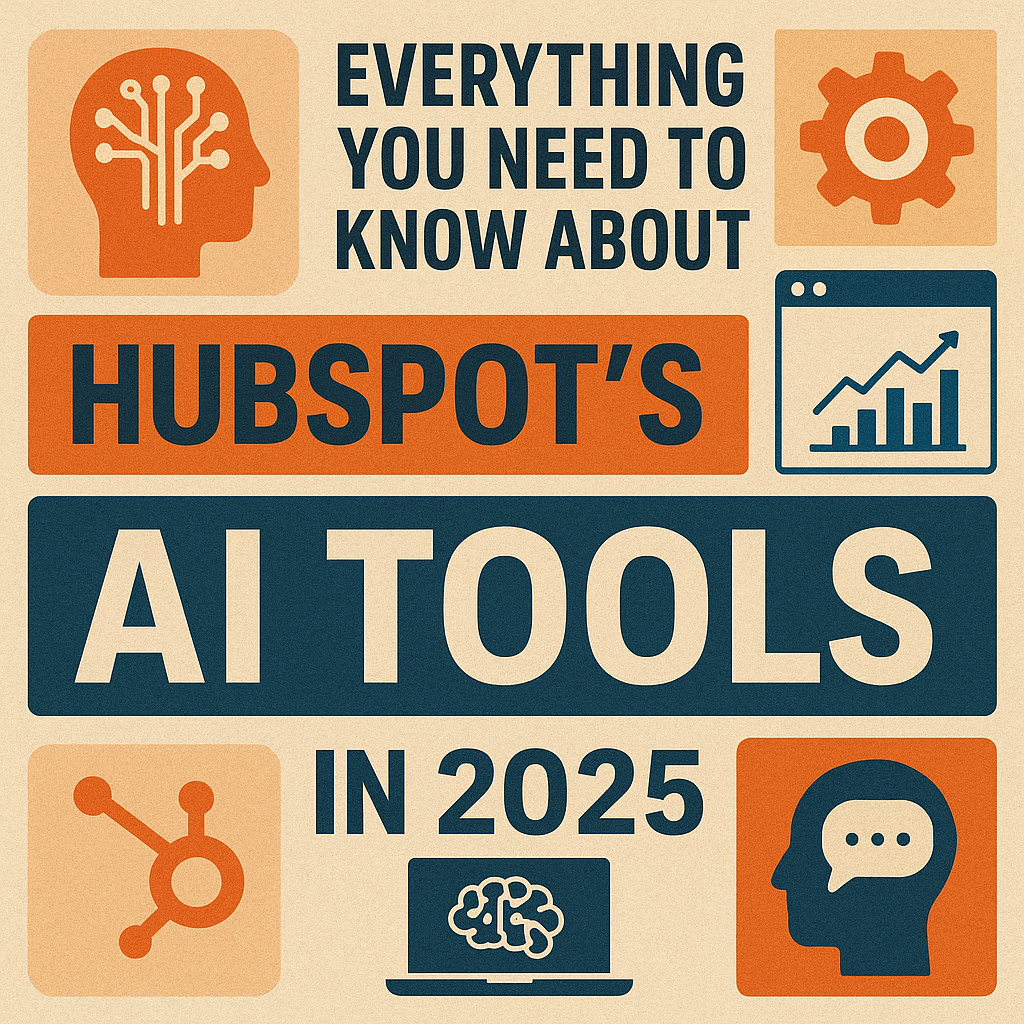.png?width=1400&height=1050&name=10%20Reasons%20Growing%20B2B%20Brands%20Choose%20HubSpot%20(2).png)
Introduction
For growing B2B companies, choosing the right tech stack isn’t just a matter of preference; it’s a strategic decision that can determine whether your business scales efficiently or gets bogged down by operational chaos. The tools you select will impact every part of your daily workflow, from how your teams collaborate and communicate to how quickly you can adapt to new opportunities and customer needs. A well-chosen tech stack acts as the backbone of your business, empowering your team to focus on core goals without being distracted by clunky systems or fragmented data. On the other hand, the wrong setup can lead to duplication, wasted time, and missed growth opportunities.
With dozens of platforms on the market, why do so many ambitious brands choose HubSpot?
The answer is simple: HubSpot brings everything together — marketing, sales, content, CRM, and service into a single, user-friendly ecosystem that grows with your business. Instead of managing separate platforms and stitching together fragmented data, HubSpot unifies your core operations in one place, making it easier for teams to collaborate, share insights, and move quickly. This integrated approach not only streamlines your workflow but also provides a consistent experience for both your team and your customers, ensuring that as your business evolves, your technology keeps pace alongside you.
In this article, we break down 10 core reasons why scaling B2B brands choose HubSpot as their go-to platform for driving leads, closing deals, and building lasting relationships.

1. Unified Platform: CRM, Marketing, CMS, Sales & Service in One
Unlike platforms that bolt on features through acquisitions or plugins, HubSpot was built from the ground up as one system. Everything — from your blog to your pipeline — connects under one roof.
Benefits:
- No data silos
- Shared contact timeline across teams
- Faster onboarding and collaboration
- Easier reporting and attribution
Marketers, sales reps, and support agents all work from the same source of truth.
.png?width=512&height=512&name=Design%20a%20Clear%20Call-to-Action%20(CTA).png)
2. Ease of Use for Non-Technical Teams
HubSpot is famously intuitive. Your marketers can build landing pages and workflows without developers. Your sales team can customize pipelines without CRM training wheels.
Why it matters:
- Reduces reliance on IT
- Speeds up time to launch
- Encourages adoption across departments
No steep learning curves. No clunky UX. Just modern, clean, efficient interfaces.

3. Built-In Automation That Actually Works
Whether you're automating lead nurturing, sales handoffs, or onboarding, HubSpot's automation engine lets you build workflows based on user actions, deal stages, or custom properties.
Use it to:
- Send follow-ups based on engagement
- Assign deals to reps by territory
- Trigger email campaigns from behavioral signals
Smart automation means less manual work — and more revenue.

4. CRM That’s Free to Start and Grows with You
HubSpot’s CRM is free forever for unlimited users. That means small teams can get started immediately — and scale to more advanced features as needed.
Advanced teams can unlock:
- Lead scoring
- Sales sequences
- Custom pipelines
- Forecasting tools
Start simple. Scale strategically.

5. Content Meets Conversion in the CMS Hub
HubSpot’s CMS is more than a blogging platform. It’s a conversion-focused content engine:
- Drag-and-drop page builder
- Smart content personalization
- Dynamic HubDB-driven pages
- SEO tools and A/B testing
This allows marketing teams to go live faster and test what works — all while tracking content performance down to the contact level.

6. Seamless Marketing + Sales Alignment
HubSpot’s tools connect marketing and sales like few others:
- Marketers see which campaigns drive deals
- Sales reps see the full journey before a call
- Lead scoring ensures reps focus on the best-fit contacts
- Shared dashboards track MQL → SQL → customer performance
No more blame games — just aligned growth.

7. World-Class Integrations and Ecosystem
With over 1,200 integrations in the HubSpot App Marketplace, you can connect:
- Calendly
- Salesforce (bi-directional sync)
- Slack, Zoom, and Gmail
- Stripe, QuickBooks, PandaDoc
This gives you flexibility without forcing you into an all-or-nothing ecosystem.

8. Reporting That Tells a Full Story
HubSpot’s reporting dashboards aren’t just pretty — they’re powerful.
Create reports for:
- Campaign performance
- Sales pipeline velocity
- Lead source attribution
- Email and ad ROI
All in one place. No stitching data together from four platforms or using BI tools just to understand performance.

9. Support, Training & Community That Actually Helps
HubSpot offers:
- 24/7 customer support on paid plans
- HubSpot Academy (certified training for teams)
- A global community of partners and developers
When your business is growing fast, you need more than software — you need a support system that scales with you.

10. AI-Powered Growth at Every Stage
- Teams ready to leverage advanced AI tools
- Marketers who want personalized, data-backed content ideas
- Sales teams looking to focus on high-potential leads through AI scoring
- Operations aiming to automate repetitive tasks and save time
Bonus: You Can Do More with Less
By replacing multiple tools — CMS, CRM, email marketing, automation, lead capture — HubSpot simplifies your stack and reduces overhead.
Fewer tools. Fewer logins. Fewer integration headaches.
More alignment. More visibility. More control.
Final Thoughts
If your B2B company is growing and looking for a system that can scale with your team, your traffic, and your goals — HubSpot is the platform built for that journey.
You get enterprise-level power without enterprise-level complexity.

Considering HubSpot for your business?
We help scaling companies:
- Evaluate the right HubSpot plan
- Implement custom CRM and marketing setups
- Train teams for fast adoption
You might also like
The Beginner’s Guide to HubSpot Sequences for Sales Teams
Introduction Sales teams are always looking for easier ways to impress prospects, stay on top of follow-ups, and close deals faster. But when your inbox is overflowing and your to-do list never seems to end, keeping up with everyone can feel almost...
Everything You Need to Know About HubSpot's AI Tools in 2025
Introduction Artificial Intelligence (AI) is no longer a futuristic concept - it’s here, transforming how businesses operate. In 2025, HubSpot’s AI tools are helping companies streamline marketing, sales, and customer service like never before....
What Is HubSpot CMS Hub? A Beginner’s Guide 2025
Introduction If you're a growing business looking to scale your digital presence, improve your lead generation, and reduce dependence on developers, then HubSpot CMS Hub is a platform you should definitely consider.







Leave a reply